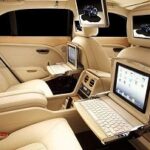By Kelechi Deca,
I have always been amazed at the thinking behind the names of cars, and the extent such names actually reflects the characters of the cars. While some car companies like Mercedes and BMW use letters and numbers to differentiate their brands, others go the extra mile by giving soul through names.
For example, BMW in the past years use the last two digits of the number in each series to refer to the displacement size of the engine (e.g. the 328i had a 2.8-liter engine).
Some other companies adopt different measures such as using specific market acceptability to certain brands, aimed to avoid local taboos.
For example, Mitsubishi SUV is known as the Pajero in all markets except Spanish speaking countries where it is known as Montero, this is because Pajero means something vulgar in Spanish.
There are some cases cars from different companies have same names in different markets, for example the Renault Clio is known as Clio everywhere except in Japan where the car known as Clio is a Honda product, because of that, Renault renamed its Clio as Lutecia.
To make its highest selling brand the Corolla look trendy, Toyota renamed it as Aurais in most markets, especially the UK as they believe the name change would make them gain new customers. But it remained Corolla elsewhere or Altis and in some places Corolla Altis.
The Volkswagen Golf which is one of the most popular cars in the world was originally named Volkswagen Rabbit in the US and as the Caribe in Mexico while in South Africa, it was called the Citi Golf from 1984 until 2009.
There are also examples of Twin cars and Triplets too. This is more common with Toyota and also with GM. In the auto lingo, it is known as “badging” or Badge Engineering which is part of marketing illusion that gives the impression of an all new model but in actual fact, what changed are the body, and dashboard with one or two buttons while the car is an old car existing with another name.
In the United States, this practiced is more popular even though Toyota started it with their platform and parts sharing. For example, we have the Buick Enclave which is part of a quadruplet among which are the GMC Acadia, the Saturn Outlook and the Chevrolet Traverse.
However, a new innovation is where a salon car shared platform with SUV. Example of this is the Ford Fusion and the Ford Edge SUV.
Toyota is the leader in twinning vehicles by using one car to build up to three or four cars for different markets. A good example of this is the Toyota Rush which is no different from Toyota Avanza, Avanza Veloz, Innova, and Wish, all these cars share same DNA in chassis, engine and even body structure but for different markets.
Same case is with the Toyota Yaris which is same car as the Toyota Vios and Toyota Wigo depending on where you live.
Another interesting example of twin cars is where same car is produced by different car companies with different names. A clear example of this is the Toyota Matrix, and the Pontiac Vibe, those of you that are observant enough would have noticed how similar both cars look. That is simply because they are the same car but owned by different car companies, with different names.
You can also twin cars under same group but with different names, and an upgrade in luxury and gadgetry. An example is the Lexus ES 350 and the Toyota Camry. One is luxury version of the other under different badge, but still same car.
In the SUV category, you have twin cars that share DNA in almost every compartment except skin cover. Another example is availability of twin cars with discrepancies in value depreciation, for example, the GMC Yukon Denali and its twin, the Cadillac Escalade.
Then we have this interesting case where one car gave birth to another. Such example is the Toyota Tundra and the Toyota Sequoia. When the Tundra was launched as part of a campaign by Toyota North America to have a slice of the sports truck market almost monopolized by Ford F Series, RAM and the Silverado.
It was a hit, so Toyota started starting first with the T-100 which was modified in 2000 as Tundra. When Toyota marketers observed how the truck was accepted (supported by Toyota brand loyalty), they suggested to their engineers that the truck could have two variants, one covered like the Land Cruiser to compete in the large size SUV segment dominated by the Ford Expedition, Suburban and Tahoe, and that it should be as strong as Tundra with very high durability.
They name the car Sequoia, after one of North America’s strongest and most resilient trees. And used same engine across for Land Cruiser, Tundra and Sequioa. But different bodies.






